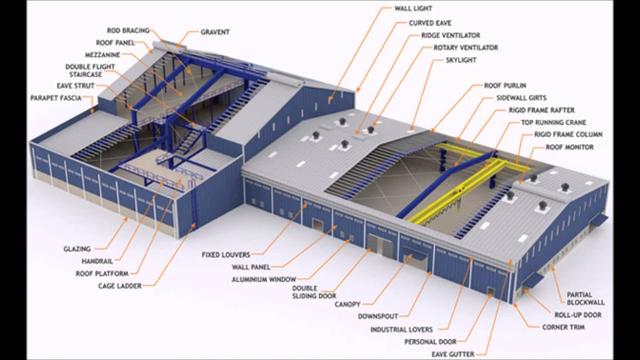Definition
Industrialstructureisaconceptputforwardindevelopmenteconomics.Industrialstructureisalsocalledindustrialsystemandisthemaincomponentofsocialeconomicsystem.Industrialstructureupgradingisasystematicprojectthatrealizestheimprovementofproductionfactors,theoptimizationofindustrialstructure,andtheincreaseofindustrialaddedvaluethroughthemutualtransformationofvariousproductionfactorswithintheindustryandbetweenindustriesintermsoftime,space,andlevels.Thesymmetricalrelationshipbetweeneconomicsubjectsandeconomicobjectsisthemostbasicindustrialstructureandthemostfundamentaldrivingforcefortheupgradingoftheindustrialstructure.
Interpretation
Industrialstructurereferstotheproportionofagriculture,industry,andserviceindustriesinacountry’seconomicstructure.Ontheonehand,changesintheindustrialstructurewillbringgoodmarketopportunitiesforcertainindustries,andontheotherhand,itwillalsobringsurvivalthreatstootherindustries.Usuallyintheprocessofeconomicgrowth,theimportanceoftheserviceindustrywillincreasedaybyday,theproportionoftheserviceindustrywillincreasedaybyday,andserviceindustrypractitionershavegreatermarketopportunities.
Industrialstructure,alsoknownasthesectoralstructureofthenationaleconomy.Thecompositionofthevariousindustrialsectorsofthenationaleconomyandwithineachindustrialsector.Theindustrialstructureordepartmentalstructureofsocialproductionisproducedanddevelopedonthebasisofgeneraldivisionoflaborandspecialdivisionoflabor.Thestudyofindustrialstructureismainlytostudytherelationshipbetweenthemeansofproductionandthemeansofliving;fromthedepartmentpointofview,itismainlytostudytherelationshipbetweenagriculture,lightindustry,heavyindustry,construction,commerce,andserviceindustries,andTheinternalrelationsofvariousindustrialsectors.
Higherindustrialstructure,alsoknownasadvancedindustrialstructure.Referstotheprocessofacountry’seconomicdevelopmentfocusorindustrialstructureshiftingfromtheprimaryindustrytothesecondaryandtertiaryindustries.Itmarksthelevelofacountry’seconomicdevelopmentandthestageanddirectionofitsdevelopment.Theadvancementoftheindustrialstructureisoftenspecificallyreflectedintheprocessofchangesintheoutputvalue,employedpersons,andtheproportionofnationalincomeamongvariousindustrialsectors.
Measurementstandards
Theadvancedindustrialstructureisthemostappropriateindustrialstructureindifferentperiodsofacountry’seconomicdevelopment.Themainmeasurementstandardsare:
(1)Theprincipleofincomeelasticity(standardofincomeelasticity)istheratioofeachadditionalunitofincometotheincreaseinthequantityofdemandforacertaincommodity.Iftheincreaseddemandduetoincomeexpansioncanbetransformedintogoodswithhighincomeelasticity,theexportgrowthratecanbeincreasedaccordingly,whichisidealfortheoveralleconomicgrowth;(2)Theprincipleofproductivityincreaserate(productivityAscentprinciple).Inorderforgoodswithhighincomeelasticitytobeexported,theymusthavesufficientinternationalcompetitiveness.Therefore,thebestchoiceistofocusonindustrieswithhighproductiongrowthratesorindustrieswithhightechnologicaldevelopmentpossibilities;
(3)Theprincipleoftechnology,security,andgroups,thatis,fromalong-termperspective,thedrivingforceofeconomicdevelopmentistechnologicalinnovation,sothatalthoughtheindustrythatcanbecomethecoresectoroftechnologicalinnovationinthefutureisinarelativelyinferiorposition,itcannotbeeasilygivenup;
Forthestabledevelopmentofacountry’seconomy,acertaindegreeofnationalsecurityoranindustrythatcanguaranteethecountry’sprestigeisactuallyrequired;forthebalanceddevelopmentofindustrialsectors,awiderrangeofindustrialgroupsmustbeformed.Thestateoftheindustrialstructurethatmeetstheabovethreestandardscanbecalledtheoptimalstateofacountry'sindustrialstructureinacertainperiodoftime,andatthesametime,italsoindicatesthattheadvancedindustrialstructureofthecountryhasreachedthestandardstate.
Industrialstructure,including:Industrialstructureitself,andTechnicalstructure,Industriallayout,industrialorganization,industrialchainfiveElements.
Industryclassification
Ineconomicresearchandeconomicmanagement,theclassificationmethodsoftenusedmainlyincludetwomajorfields,twomajorclassifications,threeindustryclassifications,andresourceintensityTaxonomyandInternationalStandardIndustrialClassification.
Theclassificationoftwomajorfieldsandtwomajorcategories
Thisclassificationistoclassifyindustriesaccordingtothenatureofproductionactivitiesandtheirproductattributes.Accordingtothenatureofproductionactivities,theindustrialsectorisdividedintotwomajorareas:materialproductionsectorandnon-materialproductionsector.Theformerreferstothesectorsengagedintheproductionofmaterialmaterialsandcreatingmaterialproducts,includingagriculture,industry,construction,transportation,postandtelecommunications,andcommerce.Thelatterreferstothedepartmentsthatdonotengageintheproductionofmaterialmaterialsbutonlyprovidenon-materialservices,includingscience,culture,education,health,finance,insurance,consultingandotherdepartments.
Thethree-industryclassificationmethod
Thisclassificationmethoddividestheindustrialstructureaccordingtothesequenceofthehistoricaldevelopmentofsocialproductionactivities.Thesectorwhereproductsaredirectlytakenfromnatureiscalledtheprimaryindustry,thesectorthatreprocessesprimaryproductsiscalledthesecondaryindustry,andthesectorthatprovidesvariousservicesforproductionandconsumptioniscalledthetertiaryindustry.Thisclassificationmethodhasbecomeamorecommonindustrialstructureclassificationmethodintheworld.
mycountry’sthreeindustriesaredividedinto:
Theprimaryindustry:Agriculture(includingplanting,forestry,animalhusbandryandFisheries).
Secondaryindustry:Industry(includingextractiveindustry,manufacturingindustry,electricpower,gas,waterproductionandsupplyindustry)andconstructionindustry,industryTherevolutionisoftencausedbyarevolutioninthemanufacturingindustrythatleadstocomprehensivechangesinthethreemajorindustries.
Tertiaryindustry:Otherindustriesexceptprimaryandsecondaryindustries.Accordingtomycountry'sactualsituation,thetertiaryindustrycanbedividedintotwoparts:oneisthecirculationsector,andtheotheristheservicesector.Specifically,itcanbedividedintofourlevels:
Thefirstlevel:thecirculationsector(logistics),includingtransportation,warehousing,postandtelecommunications,wholesaleandretailtrade,andcatering.
Secondlevel:Departmentsservingproductionandlife,includingfinance,insurance,geologicalprospecting,waterconservancymanagement,realestate,socialservices,agriculture,forestry,animalhusbandry,andfisheryservices,Transportationauxiliaryindustry,comprehensivetechnicalserviceindustry,etc.
Thethirdlevel:Departmentsthatservetoimprovethelevelofscienceandcultureandthequalityofresidents,includingeducation,culture,art,radio,filmandtelevision,health,sportsandsocialwelfare,scientificresearch,etc.
Fourthlevel:Departmentsthatservethepublicneedsofsociety,includingstateagencies,politicalpartiesandsocialorganizations,aswellasthearmy,police,etc.
ResourceIntensityClassificationMethod
Thisindustryclassificationmethodisclassifiedaccordingtothedifferenceinthedominantresourcesinvestedbyeachindustry.Accordingtotherelativeintensityofthethreeproductionfactorsoflabor,capitalandtechnologyineachindustry,theindustriesaredividedintolabor-intensive,capital-intensiveandtechnology-intensiveindustries.
1.Labor-intensiveindustries.Referstoanindustrythatmainlyreliesonalargeamountoflaborforproduction,buthasalowdegreeofdependenceontechnologyandequipment.Themeasurementstandardisthatwagesaccountforalargerproportionofproductioncostscomparedtoequipmentdepreciationandresearchanddevelopmentexpenditures.Generallyspeaking,thecurrentlabor-intensiveindustriesmainlyrefertomanufacturingindustriessuchasagriculture,forestryandtextiles,clothing,toys,leather,andfurniture.Withtheadvancementoftechnologyandtheapplicationofnewtechnologyandequipment,thetechnologyandcapitalintensityoflabor-intensiveindustriesindevelopedcountriesarealsoincreasing,andtheyaregraduallydivergingfromlabor-intensiveindustries.Forexample,thefoodindustryisclassifiedasacapital-intensiveindustryindevelopedcountries.
2.Capital-intensiveindustries.Referstoindustriesinwhichthecostofcapitalandlaborcostsaccountforalargerproportionoftheunitproductcost,andeachworkeroccupiesahigheramountoffixedcapitalandcirculatingcapital.Atpresent,capital-intensiveindustriesmainlyrefertothesteelindustry,generalelectronicsandcommunicationequipmentmanufacturing,transportationequipmentmanufacturing,petrochemicals,heavymachineryindustry,powerindustry,etc.Capital-intensiveindustriesaremainlydistributedinbasicindustriesandheavyprocessingindustries,andaregenerallyregardedasanimportantfoundationforthedevelopmentofthenationaleconomyandtherealizationofindustrialization.
3.Technology-intensiveindustries.Referstoindustriesthatrelyheavilyontechnologyandintellectualfactorsintheproductionprocessmorethanonotherfactorsofproduction.Thecurrenttechnology-intensiveindustriesinclude:microelectronicsandinformationproductmanufacturing,aerospaceindustry,atomicenergyindustry,modernpharmaceuticalindustry,newmaterialindustry,etc.
Currently,technology-intensiveindustriesrepresentedbymicroelectronicsandinformationproductmanufacturingaredevelopingrapidly,becomingaleadingindustrythatdriveseconomicgrowthindevelopedcountries.Therefore,itcanbesaidthatthedevelopmentleveloftechnology-intensiveindustrieswilldetermineacountry'scompetitivenessandeconomicgrowthprospects.
InternationalStandardIndustrialClassification
Inordertomakethestatisticaldataofdifferentcountriescomparable,theUnitedNationspromulgatedthe<>(ISIC).Thecurrentversionisthethirdrevisionin1988.Thissetof"InternationalStandardIndustrialClassification"isdividedinto17sectorsA-Q,including99industrycategories.The17sectorsare:A,agriculture,huntingandforestry;B,fisheries;C,miningandquarrying;D,manufacturing;E,electricity,gasandwatersupply;F,construction;G,wholesaleandRetail,repairindustry;H,hotelsandrestaurants;I,transportation,storageandcommunications;J,financialintermediary;K,realestate,leasingindustry;L,publicmanagementandnationaldefense;M,education;N,healthandsocialwork;O,Socialandpersonalservices;P,domesticemployees;Q,overseasorganizationsandinstitutions.
The"NationalEconomicIndustryClassificationandCode"issuedbymycountryisformulatedwithreferencetothe"InternationalStandardIndustrialClassificationofAllEconomicActivities",sotheindustryclassificationandincludesthe"OrganizationforEconomicCooperationandDevelopment"(OECD)Mostofthecountriesincludedarebasicallythesame.
Influencingfactors
Allthefactorsthatdetermineandaffecteconomicgrowthwilldirectlyorindirectlyaffectchangesintheindustrialstructuretovaryingdegrees.Knowledgeandtechnologicalinnovation,populationsizeandstructure,economicsystem,naturalresourceendowment,capitalscale,demandstructure,internationaltrade,etc.arethebasicconstraintsintheevolutionofacountry'sindustrialstructure.Herearesomeimportantfactors.
Knowledgeandtechnologicalinnovation
Knowledgeinnovation,technologicalinnovationandtechnologicalprogressarethemaindrivingforcesofeconomicgrowthandthedrivingforceofindustrialstructurechanges.Thedevelopmentofscienceandtechnologyisthemostimportantfactorthataffectsthechangeofindustrialstructure,whichisspecificallymanifestedinthefollowingaspects.

Technologicalrevolutionspawnsnewindustries
Technicalrevolution,technologicalinnovationandtechnologicaldiffusionallhaveanimpactontheupgradingofindustrialstructure,especiallytechnologicalrevolution,whichoftenleadstothebirthofsomenewindustrialsectors.Accordingtothegeneraldivision,humansocietyhasexperiencedfourtechnologicalrevolutions.
Themainsymbolofthefirsttechnologicalrevolutionwastheinventionoftextilemachineryandthewidespreaduseofsteamengines.Themachineindustryreplacedthehandicraftindustrybasedonmanuallaborandpromotedthetransformationofhumansocietyfromanagriculturalsocietytoanindustrialsociety.,Aqualitativebreakthroughinproductivity.Theriseofthetextileindustry,theleapforwardofthetransportationindustry(shipsandtrains),andtheriseofthesteelandmachineryindustriesarealltheresultsofthefirsttechnologicalrevolution.Inagriculture,peoplebegantousesteampumpstoirrigatefarmlandinlargequantities,anduseittopromotestonemillingtoprocessagriculturalproducts,andthemechanizationofagriculturalproductionbegan.Theenergystructureofmankindhasshiftedfromwood-basedtocoal-based,andindustrialpowerhasevolvedfrommanpower,waterpower,andwindpowertosteampower.
Thesecondtechnologicalrevolutionbeganinthe1870s.Itsmainsymbolwasthewidespreaduseofelectricityandtheinventionofgeneratorsandmotors,whichmadeproductivityriseagain.Theautomobileindustryandaviationindustryhavebeenestablishedonthebasisofinternalcombustionenginetechnology;thepowerindustryhasrisen(powergeneration,transmission,distributionsystems),and"weakcurrent"industrieshaveemerged("weakcurrent"technologieshaveemerged,andthetelecommunicationsindustry,broadcastingindustry,etc.)havebeengeneratedaccordingly.Duringthesecondtechnologicalrevolution,industrialproductionwasfurthercentralized,monopolisticenterprisescontinuedtoemerge,the"Taylorsystem"appearedintheinternalmanagementofenterprises,andproductionlineswereformed.
Thethirdtechnologicalrevolutionbeganinthe1950s,markedbytheuseofatomicenergy,thebirthanddevelopmentofelectroniccomputers,polymersynthesistechnologyandspacetechnology.Theemergenceofatomicenergytechnologyhasledtotheriseofalargenumberofnuclearenergyindustriesintheproductionandapplicationofnuclearenergy.Amongthemareindustriesrelatedtonuclearenergysuchasmechanicalequipment,materials,andfuels.Polymersynthesistechnologyhasledtothedevelopmentofplastic,rubber,fiber,andsyntheticmaterialsindustries.Theemergenceofelectroniccomputertechnologyhashadahugeimpactthatiswellknown.Humanbeingshaveabrand-newproductionmethodrepresentedbyelectroniccomputers,whichgreatlysavespeople'sphysicalstrength,andreplaceshumanbrainpowertoacertainextent,enablingpeopletouse"computers"toreplaceallkindsofcomplexmentallabor.Thisisarevolution.Sexualchangeshavegreatlyincreasedlaborproductivity.Thedevelopmentofcomputertechnologyandthewidespreaduseofcomputershaveenabledtheestablishmentofinformationsystemsforsocialmanagementandenterprisemanagement,andtheinformationindustryhasgraduallybecomealeadingindustry.Obviously,thistechnologicalrevolutionhasbroughtaboutfurtheradjustmentandupgradingoftheindustrialstructure.
Thefourthtechnologicalrevolutionoriginatedinthe1980sandisusuallycalledthenewtechnologicalrevolution.Itismainlybasedonbioengineeringtechnology,informationnetworktechnology,softwaretechnology,newmaterialtechnology(suchasnanotechnology),etc.Itindicatesthatthisnewtechnologicalrevolutionisstillunderway,andtherearestilldifferentopinionsonitsspecificcontent.Inthepast20years,theemergenceofhigh-techandtheriseofhigh-techindustrieshavehadasignificantimpactontheupgradingofindustrialstructure,andalsoprovidedatechnologicalfoundationfortheriseanddevelopmentoftheknowledgeeconomy.Itisparticularlynoteworthythatinformationnetworktechnology,biotechnologyandgenetechnologybasedonlifescienceswillplayanincreasinglyimportantroleinthedevelopmentofvariousindustries.Thetechnologicalrevolutionhascontributedtothetransformationofindustriesfromlabor-intensivetocapital-andtechnology-intensive.
Thetextileindustryinthefirsttechnologicalrevolutionwasbasicallyalabor-intensiveindustry,whiletheautomobile,chemical,steelandotherindustrialclustersdevelopedinthesecondtechnologicalrevolutionwerecapital-intensive.Newindustriesborninthethirdandfourthtechnologicalrevolutions,suchasthecomputerindustryandaerospaceindustry,areknowledge-andtechnology-intensiveorcapital-intensiveindustries.Thenewtechnologicalrevolutionnotonlycontributedtothechangesinleadingindustriesinvariousperiodsandchangedthepositionofeachindustryintheindustrialstructure,butalsopromotedtheadjustmentofthelaboremploymentstructure.
Technologicalinnovationpromotesindustrialdevelopment
Forscienceandtechnologytobecomethemainforcedrivingeconomicgrowth,itmustbetransformedfromknowledgeformtomaterialform,andfrompotentialproductivitytoactualproductivity.Thefirsttransformationisrealizedinthislinkoftechnologicalinnovation.Technologicalinnovationisanuninterruptedprocess.Fromadynamicperspective,thetechnologicalinnovationprocessconsistsofscientificresearchformingnewinventions,newproductdevelopment,trialproductionandproduction,andtrialproductionmarketing.Technologicalinnovationisthedrivingforceforindustrygrowthanddevelopment.
Therearecountlessexamplesoftechnologicalinnovationpromotingindustrialdevelopment.Asfarasagricultureisconcerned,comparedwithtraditionalagriculture,modernagriculturehasadifferentscientificandtechnologicalcontent.Whilemodernagriculturalscienceandtechnologyisformingitsowncompletesystem,manyothercategoriesofnaturalscienceandsocialscience,technicalscienceandeconomicsciencecontinuetoinfiltrateandblendintoagriculturalscience,thusformingmanynewintersections,broadeningthefieldofagriculturalproduction,andpromotingmodernAgriculturecontinuestodevelop.
Naturalresourceendowment
Naturalresourcesaretheexternalnaturalconditionsonwhichthesocialproductionprocessdepends.Theendowmentstatusofacountry'snaturalresources(includinggeographiclocation,landstatus,totalmineraldepositsanddistribution,waterresources,climate,etc.)hasanimportantimpactonacountry'sindustrialstructureandeconomicdevelopment.Theeconomywasfirstdevelopedinthefrigidzoneandcoastalareas.Today,manydevelopedcountrieshavesuperiornaturalresourceconditions,whichconfirmstheimportanceofnaturalresources.Thequalityofnaturalconditionsdirectlyaffectsthedevelopmentofacountry'sagriculture.Thestatusofundergroundresourcesdirectlyaffectsthestructureoftheminingindustryandfuelpowerindustry.
TheindustrialstructureofthememberstatesoftheOrganizationofPetroleumExportingCountries(OPEC)andAustralia,NewZealand,SouthKoreaandothercountriesintheprocessofindustrialstructuretransformationhaveindeedbenefitedfromtheirdomesticnaturalresourceendowments.Buttheendowmentofnaturalresourcesisbynomeansadecisivefactor.Countrieswithgoodnaturalresourcesmayhaveverydifferenteconomicdevelopments.Therefore,thepossessionofnaturalresourcesisoftennotregardedbysomeeconomistsasawayofindustrializationandstructuraltransformationinacountry,suchasJapan,Singapore,andHongKongSpecialAdministrativeRegionofChina.Inparticular,acountrysuchasJapan,whichisextremelyscarceofnaturalresources,hasbeenamongthetopeconomicpowersintheworldin30years.
Atthebeginningofthe20thcentury,Argentinabecameahigh-incomecountry,anditsstandardoflivingwasmuchhigherthanthatofItalyatthattime,andevenmoresoaftertheSecondWorldWar.AlthoughArgentinahastheworld'smostproductivelandandalargeamountofminerals,thecrisisinArgentinainrecentyearshasledtoaneconomicrecession,whichshowsfromoneaspectthathavingalargeamountofnaturalresourcesdoesnotguaranteesustainabledevelopment.
Theimpactofnaturalresourcesontheindustrialstructureisrelative.Withtheadvancementofscienceandtechnology,manypreviouslydifficult-to-extractresourceswillbedeveloped,andcomprehensiveutilizationandconservationofalternativenaturalrawmaterialswillbepossible;throughinternationalTradecanmakeupfortheshortageofdomesticresourcesandeasetheconstraintsofnaturalresourcesontheindustrialstructureofacountryoraregion.Fromtheperspectiveoftheverticaldevelopmentprocess,formostcountries,astheinitialorprerequisiteforthedevelopmentofindustrializationandeconomicgrowth,naturalresourceendowmentshavedifferentrolesandinfluencesatdifferentstagesinthetransformationprocessofacountry’sindustrialstructure.Themoreitisintheearlyandmiddlestages,thegreateritsinfluenceandeffectmaybe.Whenthecomparativeadvantageofprimaryproductproductionisreplacedbythemanufacturingindustry,thuscompletingthetake-offandtransitionfromtheinitialstagetotheintermediatestage,itsroleandinfluencewilltendtodecrease.
Demandstructure
Demandistheamountofacertaincommodityorlabororservicethatconsumersarewillingandabletobuyateachpriceinacertainperiodoftime.DemandisthedesiretobuyandTheunityofpurchasingpowercannotbeademandwithoutanyone.Theaggregatedemand(aggregatedemand)isthetotalamountofexpendituresthatvarioussectorsofaneconomyarewillingtospendinacertainperiodoftime,includingthesumofconsumer,corporate,andgovernmentexpenditures.Itcanalsobedecomposedintoconsumption,investment,governmentpurchases,andnetexports(exportminusimport).
BeforeJohnMaynardKeynes,economistsbelievedinSay'stheoremof"supplycreatesdemand",buttherealityofthegreatcrisisofthe1930scompletelydeniedSay.Theorem,theKeynesianrevolutionwithdemandasthecenterofanalysisoccurredineconomics.People'sunderstandingoftheimpactoftotaldemandanddemandstructureonacountry'seconomicgrowth,supplystructure,andindustrialstructurehasbeendeepened.Fromtheperspectiveofinfluencingchangesinindustrialstructure,changesinpersonalconsumptionstructure,theproportionofintermediatedemandandfinaldemand,theproportionofconsumptionandinvestment,investmentstructure,netexportsandotherfactorsallhavevaryingdegreesofimpactonindustrialdevelopment.
Itisworthpointingoutthatundertheconditionsofashortageeconomyandasurpluseconomy,theimpactofthedemandstructureontheindustrialstructureandthesupplystructureissignificantlydifferent;theincomelevelandincomedistributionofresidentsdeterminethescaleofconsumptionandthelevelofconsumptionstructure.,Todeterminewhethertherewillbeawaveofconsumption,andthenaffecttheindustrialstructure.
Populationsizeandstructure
Populationsizehasbothquantitativeandqualitativeregulations.Populationreferstothetotalpopulationofacountryatacertainpointintime,andqualityreferstothedifferentcompositionofagiventotalpopulation.Giventheestablishedconditionsofnaturalresources,theamountofcapital,andavailabletechnologies,thespeedofeconomicgrowthortheincreaseinnationaloutputinacertainperiodoftimedependsontheamountofavailablelabor.Theincreaseinthenumberoflaborerscomesfromnaturalpopulationgrowth,increasedlaborparticipationrates(especiallytheincreaseinwomen'slaborparticipationrates),immigration,andprolongedworkinghours.
Intheearlystageofeconomicdevelopment,thepopulationgrewrapidly,andtheroleoflaborintheeconomywasmainlymanifestedintheincreaseinthenumberoflaborers.Developedcountrieshavebeenconstrainedbyinsufficientlaborsupplyintheinitialstageofpromotingthetransformationoftheirindustrialstructureintheearlystagesofindustrialization.Aftertheeconomydevelopstoacertainstage,thequalityoflabor(workers'physicalandculturalquality)playsamajorrole,andtheimprovementoflaborqualitymainlycomesfromhumancapitalinvestment.
Inrealeconomiclife,changesintheindustrialstructureortheriseandfallofacertainregionwillforcelabortoflow,causingfrictionalunemployment.Ontheonehand,thedeclineinlabordemandindecliningindustrieswillcausealotofunemployment(fullemploymentisnotequaltoworkingageEveryoneinthepopulationhasajob,anditisgenerallybelievedthatthenaturalunemploymentrateistheunemploymentrateatfullemployment).Ontheotherhand,someemergingindustrieshavejobvacanciesduetolackofqualifiedlabor.
Internationaltrade
Internationaltradeisanexternalfactorthataffectsindustrialstructurechangesunderopenconditions.Itsimpactonindustrialstructureismainlyrealizedthroughthemechanismofinternationalcomparativeinterest.Generallyspeaking,changesintherelativeadvantagesofproductproductionbetweencountrieswillcausechangesintheimportandexportstructureovertime,whichinturnwilldrivechangesinthedomesticindustrialstructure,consumptionstructure,andtradestructure.
Thedevelopmentofinternationaltradeandtheadvancementofeconomicglobalizationhavepromotedtheinternationaltransferofindustries.Inaclosedeconomy,theadjustmentoftheindustrialstructureandtheupgradingoftheindustrialstructuredonotaccompanythetransferofforeignindustries,butrathertransferfromdevelopedregionstounderdevelopedregionswithinacountry.Internationalindustrialtransferisaproductofanopeneconomyandaninevitableresultofincreasinglyfierceinternationalcompetition.
Otherfactors
Inadditiontotheabovefactors,thedegreeofcapitalaccumulationofacountry,thescaleofinternationalinvestment(includingtheoutflowofdomesticcapitalandtheinflowofforeigncapital),theeconomicsystem(plannedeconomyorMarketeconomy,plannedandcommandedindustrialdevelopmentmodelandmarketcompetitiveindustrialstructuredevelopmentmodel),industrialpolicies,historicalconditions,warandpeacefulenvironment,etc.,willallaffecttheindustrialstructureofacountrytovaryingdegrees.
Inshort,theabove-mentionedfactorsthatdetermineandinfluencetheindustrialstructuredonotexistinisolation.Thesefactorsmaypromoteeachother,restricteachother,andthusconflictwitheachother,comprehensivelyaffectinganddeterminingtheexistingindustrialstructureanditschanginglaws.
Trendofchange
Trendofstructuralchangebetweenthethreeindustries
First,thevalue-addedoftheprimaryindustryandthenumberofemployeesinthegrossnationalproductandtotalTheproportionoflaborinmostcountriesisdeclining.Untilthe1970s,insomedevelopedcountries,suchastheUnitedKingdomandtheUnitedStates,thedeclineinthevalue-addedoftheprimaryindustryandtheproportionoflaborforcebegantoweaken.
Secondly,theaddedvalueofthesecondaryindustryandtheproportionofemploymentinthegrossnationalproductandtotallaborforcewererisinginmostcountriesbeforethe1960s.However,afterenteringthe1960s,thevalueaddedoftheindustrialsectorandthenumberofemployedpersonsinthegrossnationalproductandthetotallaborforceintheUnitedStates,Britainandotherdevelopedcountriesbegantodecline,andthedeclineintraditionalindustrieswasevenmorepronounced.
Third,thevalue-addedofthetertiaryindustryandtheproportionofthenumberofemployedpersonsinthegrossnationalproductandthetotallaborforceareshowinganupwardtrendinallcountries.Afterthe1960s,thetertiaryindustryindevelopedcountriesdevelopedmorerapidly,accountingformorethan60%.
Itcanbeseenfromthechangingtrendoftheproportionsofthethreeindustriesthatintheindustrializationstageofallcountriesintheworld,industryhasalwaysbeentheleadingsectorinthedevelopmentofthenationaleconomy.Developedcountrieshavegraduallytransitionedtothe"post-industrialization"stageaftercompletingtheirindustrialization,andhigh-techindustriesandserviceindustrieshaveincreasinglybecometheleadingsectorsofnationaleconomicdevelopment.
Thestructuralchangetrendsofvariousindustrieswithintheindustry
Industrializationcanbedividedintothreestages:
1.Thedevelopmentstagecenteredonlightindustry.TheindustrializationprocessofEuropeandevelopedcountriessuchastheUnitedKingdomstartedwithlightindustriessuchastextilesandgrainprocessing.
2.Developmentstagecenteredonheavychemicalindustry.Atthisstage,theheavyandchemicalindustriessuchaschemicalindustry,metallurgy,metalproducts,andelectricpowerhavedevelopedgreatly,butthefastestgrowingistherawmaterialindustrysuchaschemicalindustryandmetallurgy.
3.Thedevelopmentstageofhighprocessingdegreeofindustry.Inthelaterstagesofthedevelopmentoftheheavychemicalindustry,thedependenceofindustrialdevelopmentonrawmaterialshasdroppedsignificantly,andthegrowthrateoftheelectromechanicalindustryhasacceleratedsignificantly.Atthistime,theprocessingchainofrawmaterialsisgettinglongerandlonger,andintermediateproductssuchaspartsandcomponentsareinthetotalindustrialoutputvalue.Theproportionhasincreasedrapidly,andindustrialproductionhasappeared"roundabout"characteristics.Theincreaseinprocessinghasgreatlyincreasedthetechnicalcontentandaddedvalueofproducts,whiletheconsumptionofrawmaterialshasincreaseddisproportionately.Therefore,thedependenceofindustrialdevelopmentontechnologyandequipmenthasgreatlyincreased,andthedeepprocessingindustryandprocessingandassemblyindustrieshavebecomethemostimportantindustrieswithintheindustry.
Theabovethreestagesreflectthegeneralsituationofindustrialstructuralchangesintheprocessoftraditionalindustrialization,anddonotmeanthateverycountryandeveryregiondevelopsinthisorder.Forexample,afterthefoundingofNewChina,undercertainhistoricalconditions,itwasfirsttoconcentrateeffortstoestablishacertainheavyindustryfoundation,andthenintheearlystageofreformandopeninguptocarryoutthe"make-uplesson"forthedevelopmentofthelightandtextileindustry,butnowitisnecessarytodriveindustrializationwithinformatization..
Thestructuralchangetrendoftheinternalstructureofagricultureineachindustry
Withthedevelopmentofagriculturalproductivity,theproportionofplantingindustryisdeclining,butitsproductionlevelisincreasing;theproportionofanimalhusbandryisgraduallyincreasingIncrease;forestryhasincreasinglyshiftedfromsimplyprovidingforestproductresourcestofocusingonitsenvironmentalandecologicalfunctions,andmaintainingandimprovingforestcoveragehasreceivedmoreandmoreattention;fisheryhasincreasinglyshiftedfromrelyingsolelyonfishingtomoderatefishingandfocusingonbreeding,anditsproportionhassteadilyincreased.
Adjustmentmeasures
Vigorouslydevelopmoderncirculationmethods.Wecanactivelyintroduceandutilizemoderncirculationmethodssuchaschain,modernlogisticsanddistribution,e-commerce,franchising,etc.Thepaceoftransformationtoimprovethemodernlevelofcirculation.
Intermsofthedevelopmentofchainoperations,wewillpromotetheexpansionofchainoperationstomultipleformatsandtypesofbusinesses.Industriessuchasbuildingmaterialsanddecoration,intermediaryservices,automobiles,andcommunicationsmustvigorouslypromoteanddevelopchainoperations.Supportandguidelarge-scalechainenterprisestousetheadvantagesofbrand,commodityandmanagementtocarryoutcross-industry,cross-ownership,andcross-regionaljointreorganization,andpromotetherealizationoflarge-scaleoperationofchainenterprises.Seizethehistoricalopportunityofthe"TenThousandVillagesandThousandTownships"marketconstructionprojectoftheMinistryofCommerce,encourageadvantageouschainenterprisestoentertheruralmarket,effectivelyimprovetheruralconsumptionenvironmentandstarttheruralmarket.
Inthedevelopmentofmodernlogisticsanddistributionindustry,wemustfocusonspeedinguptheconstructionofthecity’scirculationindustryinfrastructuresuchasthe"InternationalLogisticsCenter","CommercialLogisticsCenter",and"PharmaceuticalLogisticsCenter".Combiningurbandevelopmentplanning,throughassetjointprofessionaltransformation,fullyutilizeandintegrateexistinglogisticsresources,breakindustryboundariesandregionalblockades,furtherimproveanddevelopsocializedlogisticsenterprises,meetthedevelopmentneedsofvariousenterprises,andprovidecustomerswithhighefficiencyFastdeliveryservice,whileprovidingbasicsupportforthedevelopmentofe-commerce.
Inthedevelopmentofe-commerceandinformatizationconstruction,wemuststrengthenthegovernment'sinvestmentinnetworksecurity,networkinfrastructureconstruction,socialcredit,legalenvironment,onlinepayment,etc.,andstriveformycountry'se-commerceplatformtobeputintooperationassoonaspossible,Inordertosupportthecentralizedpurchasingtransactionsoflarge-scalecirculationindustrychaingroupsandthedevelopmentofe-commerceforsmallandmedium-sizedenterprises.Activelyencourageenterprisestouseelectronicinformationtechnologytorealizethedigitization,networking,andautomationofprocurement,marketing,logisticsdistribution,andservicemanagement,improvecirculationefficiency,andreducecirculationandservicetechnology.
Structuralcontradiction
1.Thecruxofthecontradictioninmycountry'sprimaryindustryliesintherelativeshortageofarableland,waterandotherresourcesandtheserioussurplusoflabor.
China'spercapitaarablelandandwaterresourcesarelowerthantheworldaverage.Therearemoresurpluslaborsinagriculture,andtherewillbealargenumberofnewgrowthlaborsthatneedtobeemployedeveryyearinthefuture.Thismakesusfaceadifficultproblem.Duetotheshortageofresources,wemustconstantlyimprovetheefficiencyofresourceutilization.Thisrequiresalotofinvestment,includingtheconstructionofwaterconservancyfacilities,machineryandequipment,power,chemicalfertilizers,andpesticides.Thismakesthecostofagriculturalproductscontinuetorise,andthesurpluslabormakesitdifficulttoincreasethepercapitalaborproductivityofagriculture.Therisingcostandlowlaborproductivitymakeitdifficulttoincreasethenetincomeofagriculturalproduction.Thephenomenonof"increasingproductionwithoutincreasingincome","largeagriculturalcountiesandpoorfiscalcounties"isstillveryserious,andhasbecomeakeyissueforthefurtherdevelopmentofagriculture.Overtheyears,themeasurestakentoincreasethepricesofagriculturalproductssuchasgrainandcotton,andto"compensateagriculturewithindustry"haveplayedaroleinpromotingagriculturaldevelopment.Butwhenthepricesofmajoragriculturalproductsapproachtheinternationalmarketprices,peoplearefacedwithnewpolicychoices.Inadditiontocontinuingtoincreaseinvestmentinagriculture,especiallyinscienceandtechnology,itisalsonecessarytoopenupnewroadsandadoptnewmeasures.
2.Therootofthecontradictionbetweenthelargesupplycapacityandrelativelyinsufficientdemandofthesecondaryindustryisthattherearemanyfarmersandlowincome.
ThemainindustrialproductsandhousingpercapitainChinaarestillatalowlevelintheworldandhavepotentialfordevelopment.However,duetothelowincomeleveloffarmers,thecommoditiesthathavebeenpopularizedincitiescurrentlyhavenopurchasingpowerinruralareas.
3.Thereasonsforthelowproportionofthetertiaryindustryarefactorssuchasunderdevelopedinfrastructuresuchastransportation,butthemostfundamentalreasonisthatthedegreeofurbanizationinmycountryisnotcompatiblewiththedegreeofeconomicdevelopment.
Adjustthedirection
1.Insistonputtingagriculturefirstineconomicwork,ensuringthedevelopmentofagricultureandruraleconomy,andincreasingfarmers’income.
2.Intensifytheadjustmentandtransformationoftheprocessingindustry,revitalizethepillarindustries,andactivelycultivateneweconomicgrowthpoints.
3.Encourageandguidetheaccelerateddevelopmentofthetertiaryindustry.
4.Promotetherationaldistributionandcoordinateddevelopmentoftheregionaleconomy.
Optimizationandupgrading
Basicintroduction
Theoptimizationandupgradingoftheindustrialstructureistheorganicunityoftherationalizationandadvancementoftheindustrialstructure.WillianPetty(1623-1687),thefounderofBritishclassicaleconomics,firststudiedthetheoryofindustrialstructure.BritisheconomistColinClark(1905-1989)revealedthattheprimaryindustryistheprimaryindustrytothesecondaryindustry,andthentothetertiaryindustry.Thechangeinpercapitaincomecauseslabormobility,andthenThelawleadingtotheevolutionoftheindustrialstructure.AmericaneconomistSimonKuznets(1901—1985)furtherexploredtheevolutionlawofindustrialstructureandclarifiedthegenerallawoflaborforceandnationalincomedistributionchangesamongindustries.
Industryoptimizationincludes:Structuraloptimization,advancedtechnology,cleanandsafe,highaddedvalue,strongemployabilityfivecharacteristics.
Universallaw
Allindustrialsectorsofthenationaleconomymustmaintainacertainproportionalrelationship.ThisistheobjectiveinevitabilityofsocializedmassproductionrevealedbyMarx’ssocialcapitalreproductiontheory,anditistheindustrialstructure.Oneoftheuniversallawsofchange.Itincludesthreeaspects:
(1)Therationalizationofindustrialstructure,thatis,thecoordinationbetweenindustriesrealizedonthebasisofexistingtechnology.Itinvolvesthecoordinationofvariousrelationshipsbetweenindustries,suchasthecoordinationoftheproportionalrelationshipbetweenthevariousindustriesinthescaleofproduction,theimprovementofthedegreeofinter-industrycorrelation,etc.Italsoincludesthecoordinationoftheoutputvaluestructure,thecoordinationofthetechnicalstructure,thecoordinationoftheassetstructure,andthestructureofintermediatefactors.Coordination.
(2)Theindustrialstructureisadvanced,thatis,theindustrialstructuredevelopsfromalowleveltoahighlevelaccordingtothehistoryandlogicalsequenceofeconomicdevelopment.Includingtheevolutionfromthedominantproportionoftheprimaryindustrytothedominantproportionofthesecondaryandtertiaryindustriesintheentireindustrialstructure;fromthedominantproportionoflabor-intensiveindustriestothedominantproportionofcapital-intensiveindustriesandtechnology-knowledge-intensiveindustries.Proportionevolution:Fromthepredominantproportionoftheindustrythatmanufacturesprimaryproductstothepredominanceoftheindustrythatmanufacturesintermediateproductsandfinalproducts,itgraduallyevolves.
(3)Theunityofrationalizationandhigh-levelindustrialstructure.Therationalizationoftheindustrialstructureisthebasisfortheadvancementoftheindustrialstructure;theadvancementoftheindustrialstructureistheinevitableresultoftherationalizationoftheindustrialstructure.Promotingtheoptimizationandupgradingoftheindustrialstructureisalong-termtaskintheprocessofmycountry'seconomicandsocialdevelopment.
Developmentrequirements
Accordingtothenewtrendofworldeconomicandtechnologicaldevelopmentandtherequirementsoftakinganewroadtoindustrialization,theSixteenthNationalCongressoftheCommunistPartyofChinamadethedeploymentofpromotingtheoptimizationandupgradingoftheindustrialstructure.Anindustrialpatterninwhichtheindustryistheforerunner,thebasicindustryandthemanufacturingindustryarethesupport,andtheserviceindustryisfullydeveloped.Itpointsoutthedirectionformycountrytopromotetheoptimizationandupgradingoftheindustrialstructure.The"ProposalsoftheCentralCommitteeoftheCommunistPartyofChinaonFormulatingtheEleventhFive-YearPlanforNationalEconomicandSocialDevelopment"adoptedbytheFifthPlenarySessionoftheSixteenthCentralCommitteeoftheCommunistPartyofChinaclearlyputforwardtheimportanttasksandkeypointsformycountrytopromotetheoptimizationandupgradingofindustrialstructureduringthe"EleventhFive-YearPlan"period..Itwaspointedout:"Developingadvancedmanufacturing,increasingtheproportionoftheserviceindustry,andstrengtheningtheinfrastructureconstructionofbasicindustriesareimportanttasksforindustrialrestructuring.Thekeyistocomprehensivelyenhanceindependentinnovationcapabilities,strivetomastercoreandkeytechnologies,andenhancetheabilitytotransformscientificandtechnologicalachievements.Improvetheoveralltechnologicalleveloftheindustry.”The“InterimRegulationsonPromotingIndustrialStructureAdjustment”,whichwasreviewedandapprovedbytheStateCouncil’sexecutivemeetinginDecember2005,furtherspecifiedthegoals,principles,directions,andprioritiesoftheindustrialstructureadjustmentatpresentandforaperiodoftimeinthefuture.Theconceptofdevelopment,strengtheningandimprovingmacro-control,transformingthemodeofeconomicgrowth,promotingtheoptimizationandupgradingoftheindustrialstructure,andmaintainingthesteadyandrapiddevelopmentofthenationaleconomyareofgreatsignificance.
